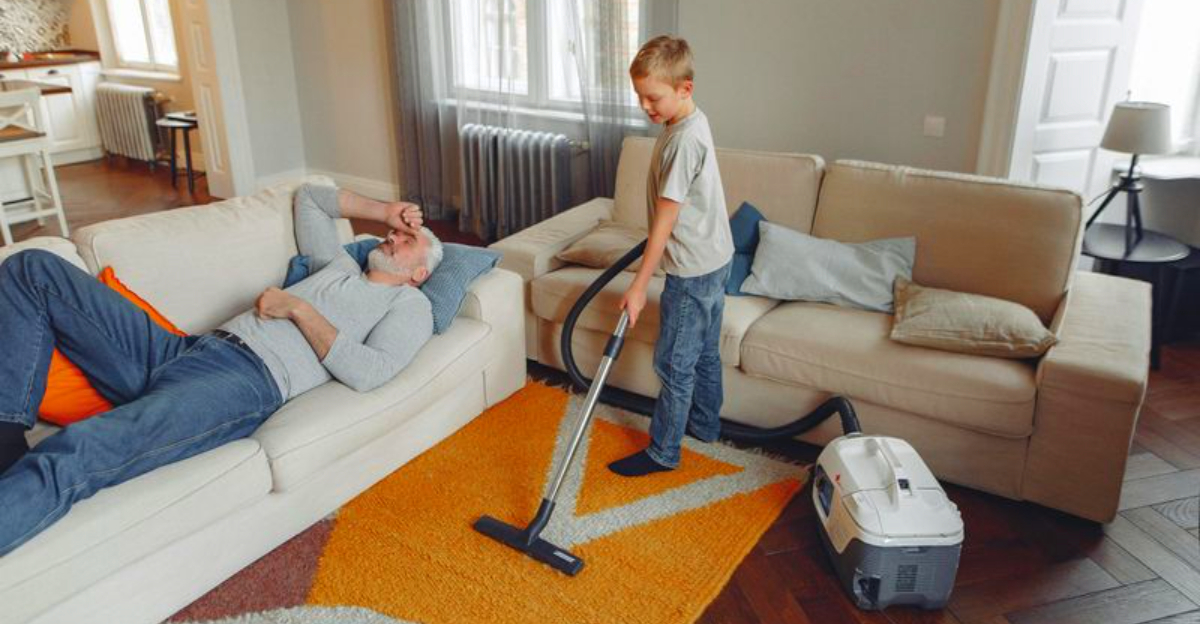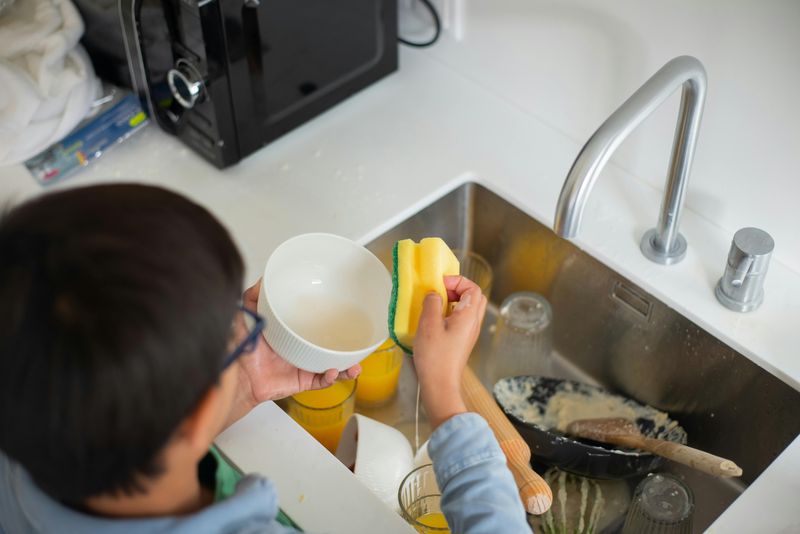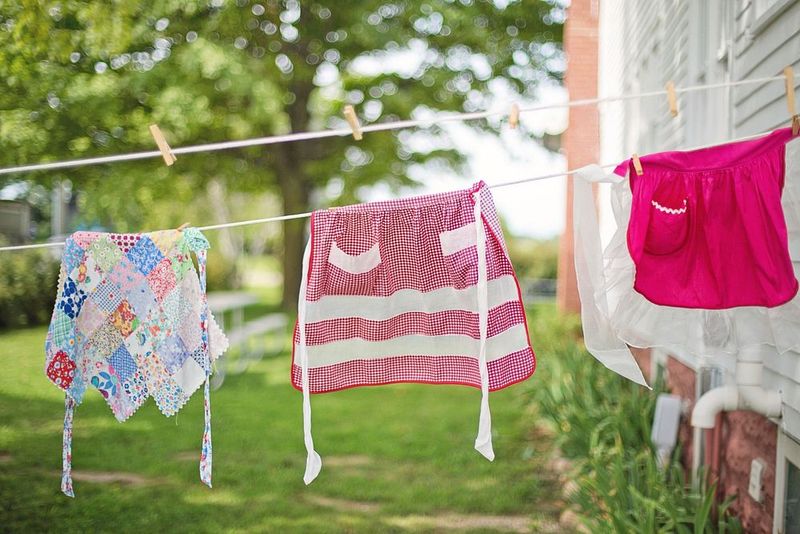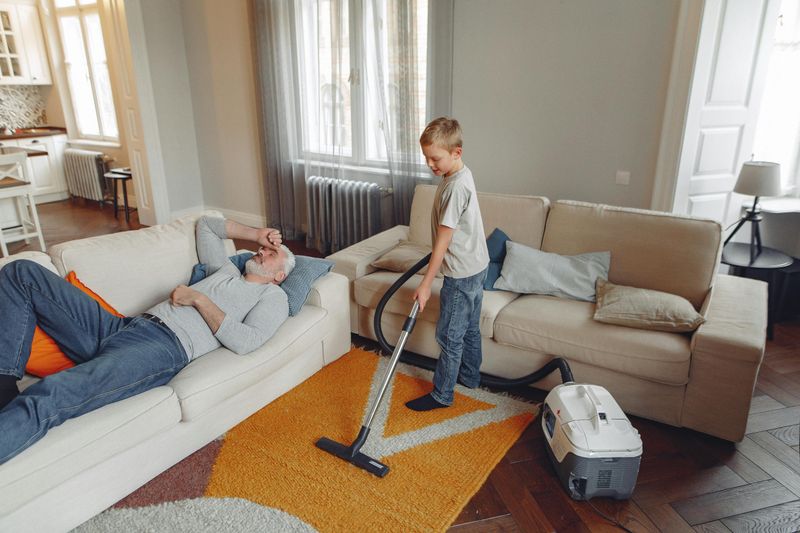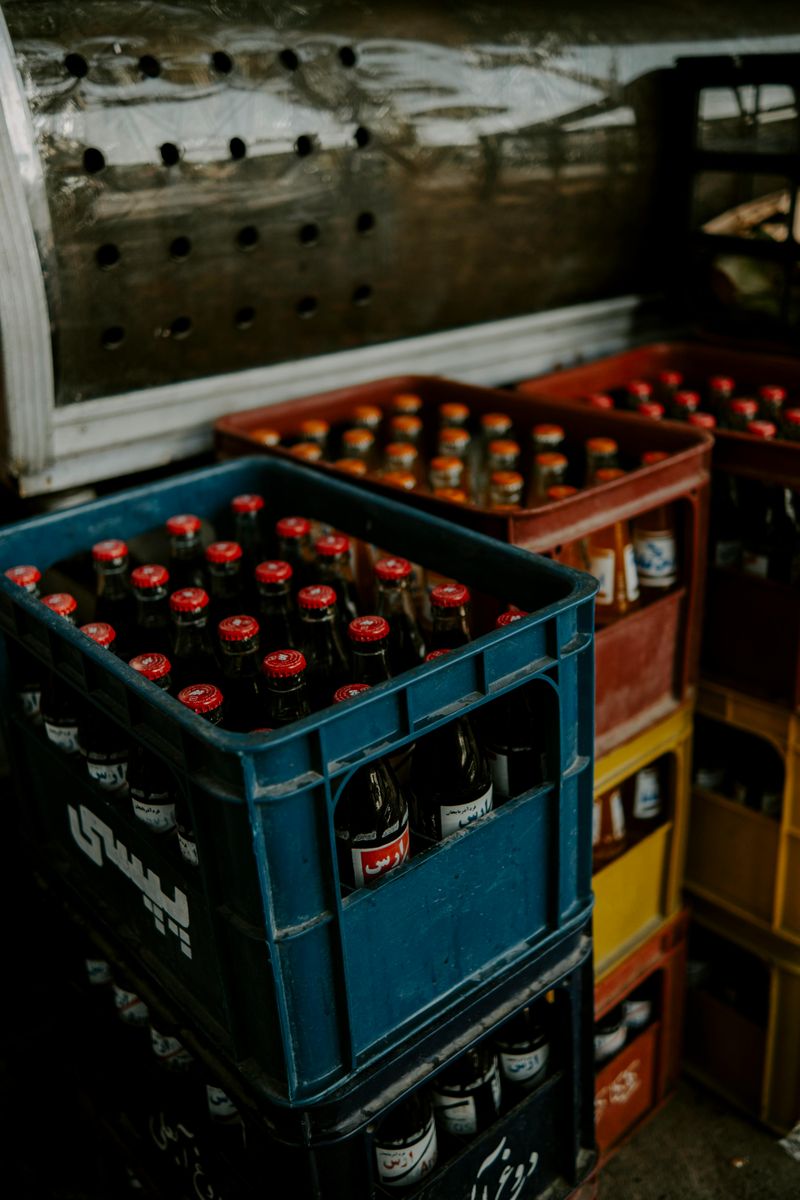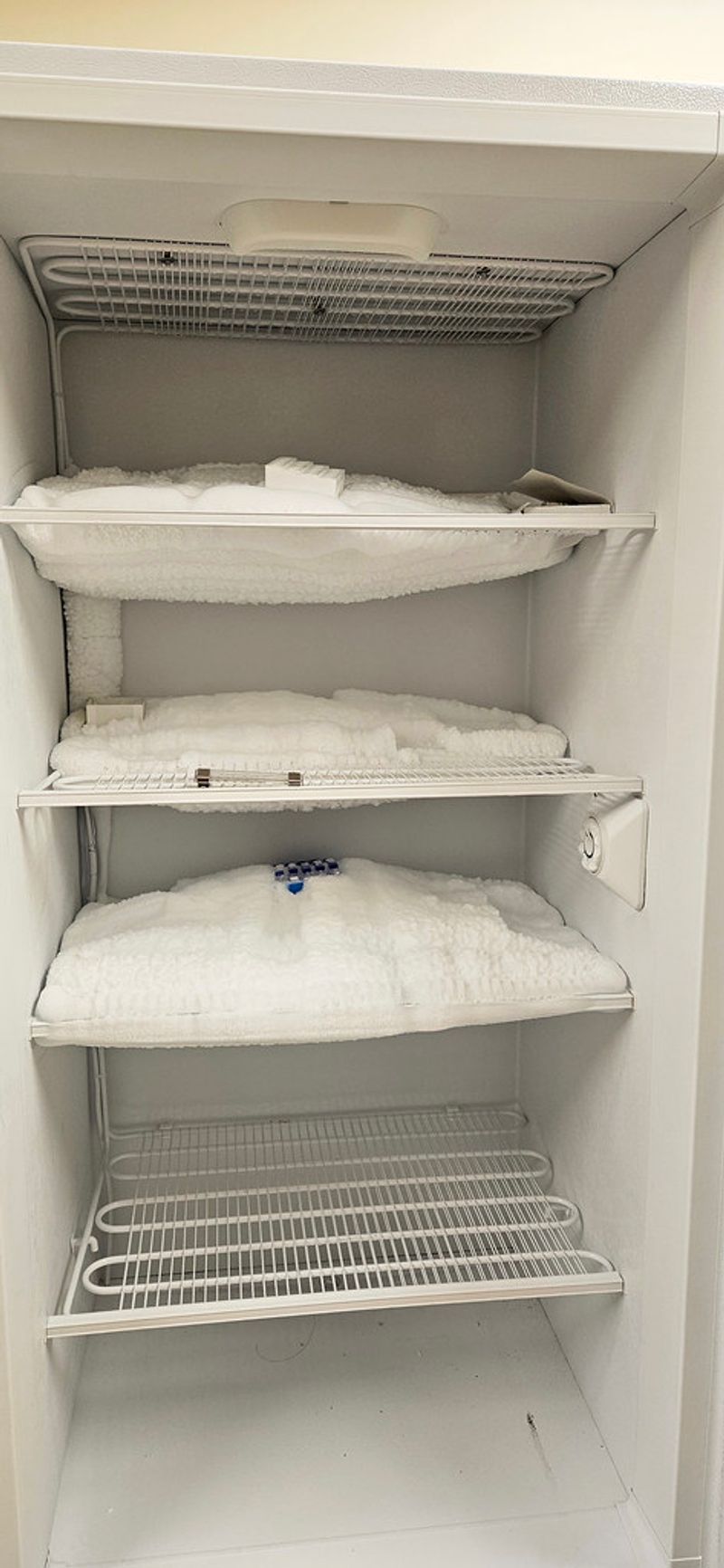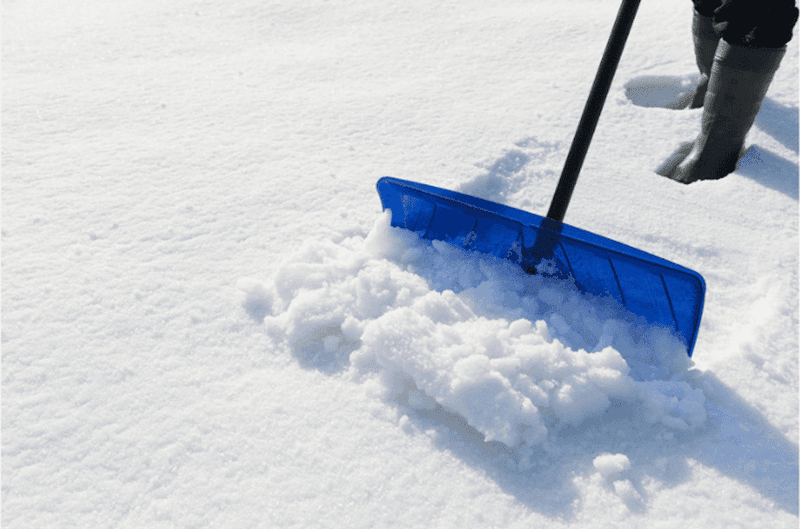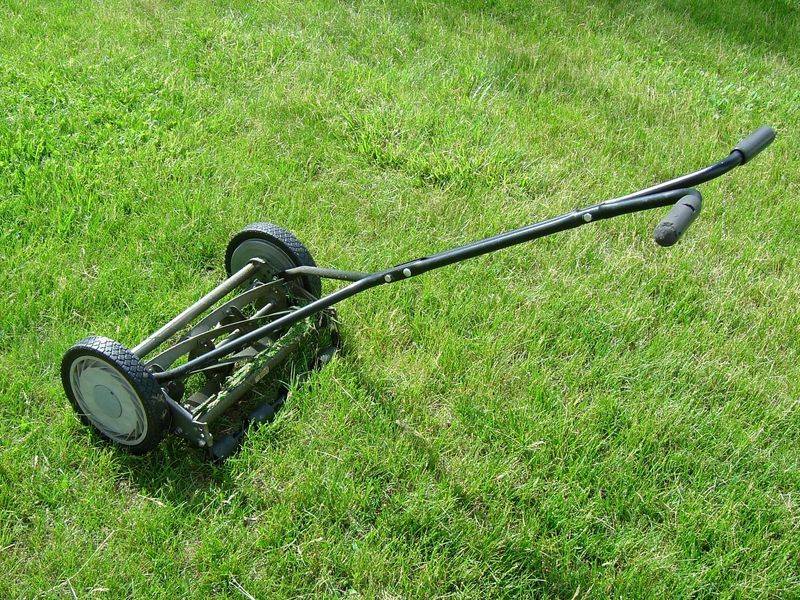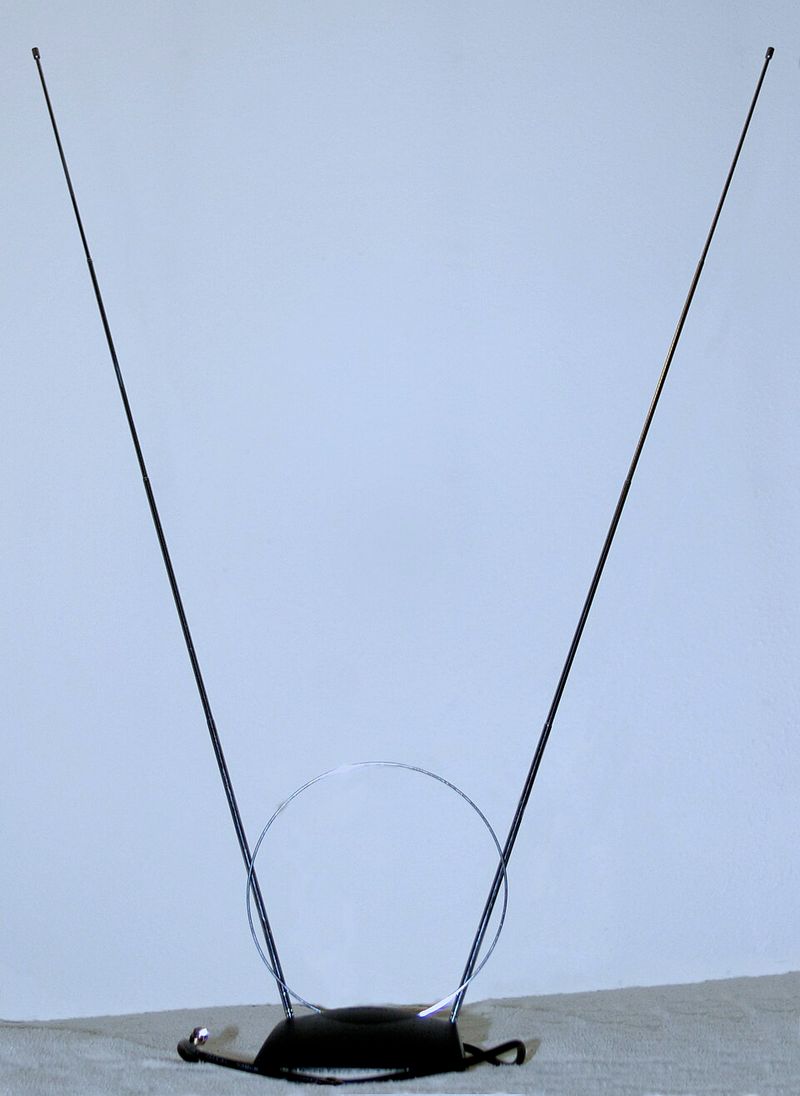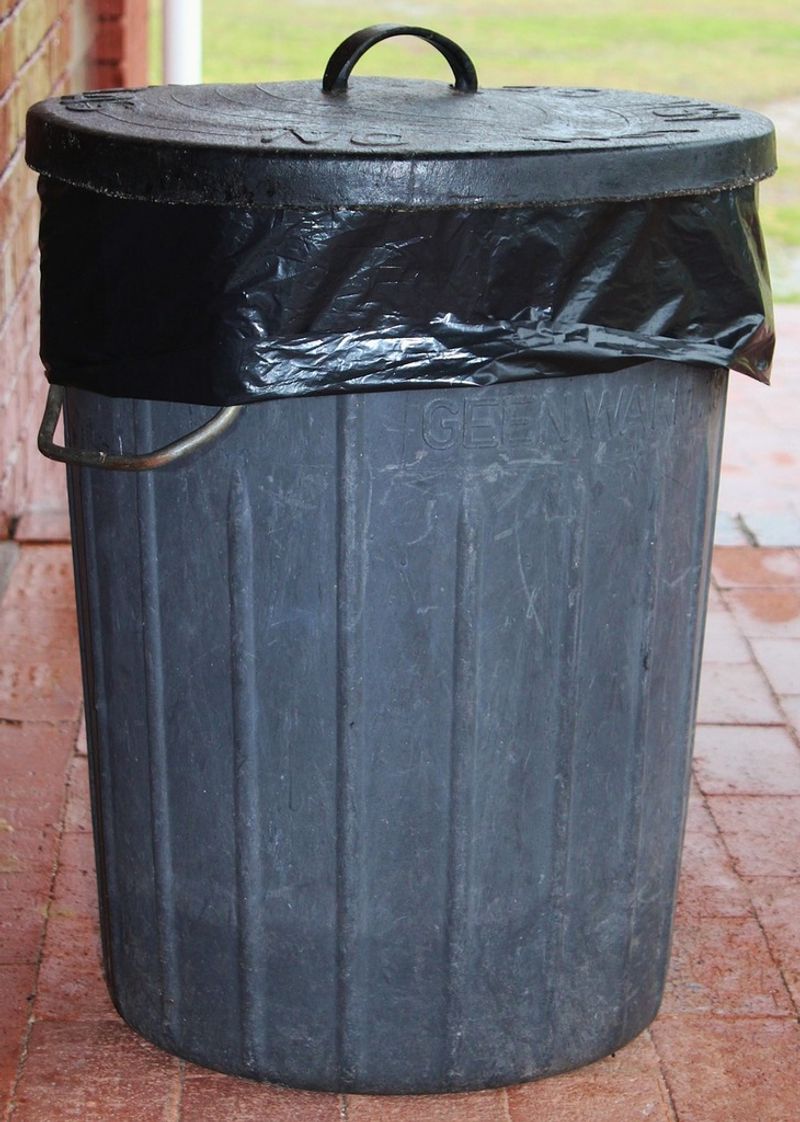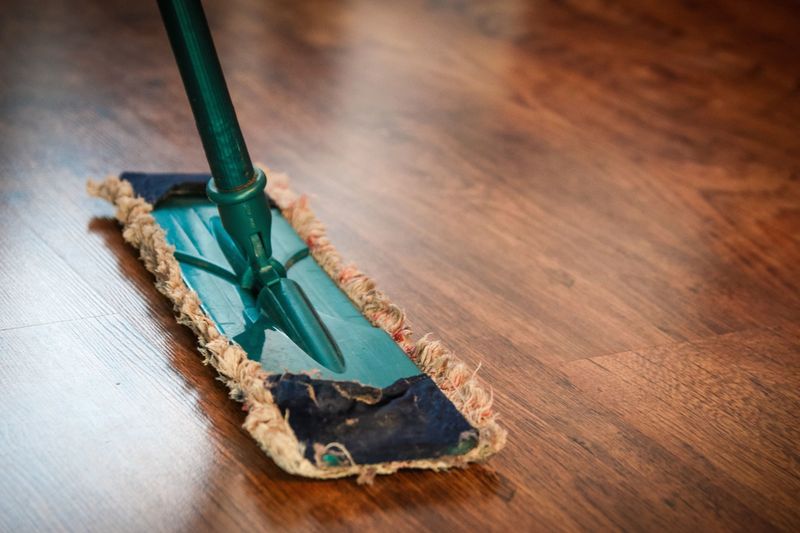Growing up in the 1960s meant pitching in around the house in ways that would surprise most families today. Kids back then tackled chores that demanded real elbow grease, patience, and a sense of responsibility that started young. Modern conveniences have made life easier, but they’ve also erased dozens of tasks that once built character and taught practical skills. Let’s look back at the daily duties that shaped a generation, chores that most parents today wouldn’t dream of asking their children to do.
1. Hand-washing and towel-drying every dish
Only about 18% of American households owned a dishwasher by 1971, which meant every plate, glass, and fork got washed the old-fashioned way. After dinner, the sink filled with steaming soapy water, and kids scrubbed until their fingers pruned. One person washed while another dried with cotton towels, stacking everything neatly in cupboards.
The process could stretch on for half an hour after big meals, especially holidays. Families saw it as teamwork, not a burden. Today’s push-button machines have made this ritual nearly extinct, along with the conversations and sibling squabbles that happened over the suds.
2. Hanging loads on the clothesline (and racing the rain)
Automatic dryers weren’t in every home yet, so fresh-washed clothes went straight outside onto lines strung across the yard. Kids lugged heavy wicker baskets, stretched on tiptoes to pin up sheets, and learned which pegs held best in the wind. The job taught weather-watching—dark clouds meant sprinting out to yank everything down before the rain soaked it all again.
Line-dried linens smelled like sunshine and fresh air, a scent no dryer sheet can match. Nowadays, HOA rules and convenience have made outdoor clotheslines rare. Back then, it was simply how laundry got done, rain or shine.
3. Ironing piles of cottons
Before wrinkle-resistant fabrics became the norm, cotton school clothes and linens emerged from the wash as crumpled messes. Mothers often “sprinkled” garments with water from a bottle, rolled them up to dampen evenly, then handed the iron to older kids. The heavy appliance hissed steam as it glided over collars, cuffs, and pleats.
Getting a crisp finish took practice and patience; scorch marks were a beginner’s rite of passage. Ironing sessions could eat up entire Sunday afternoons. Today’s permanent-press wardrobes have made this chore nearly obsolete, but the skill once defined a well-kept household.
4. Vacuuming and dusting—no robots, no shortcuts
Housework in the ’60s meant manual labor with brooms, carpet sweepers, and bulky upright vacuums that roared like jet engines. Kids were assigned rooms to tackle weekly, dragging the heavy machine over shag carpets and around furniture legs. Dusting followed—wiping baseboards, shelves, and windowsills with rags and polish.
No robot vacuums glided silently across floors while families slept. Every surface required a human touch and real effort. The routine built a sense of ownership over the home. Modern gadgets have made cleaning faster, but they’ve also removed the hands-on responsibility that once came with keeping a tidy house.
5. Beating rugs outdoors
When vacuuming couldn’t get deep-down grime out of heavy rugs, families hauled them outside and beat the dust out the old-fashioned way. Kids draped the rug over a porch rail or clothesline, then swung a wicker or wire beater like a tennis racket. Each whack sent clouds of dust billowing into the air, turning the chore into a noisy, physical workout.
Neighbors could hear the rhythmic thwacking from yards away. It was dirty, tiring, and oddly satisfying to see how much dirt came out. Modern carpet cleaners and steam machines have replaced this ritual, along with the outdoor exercise it provided.
6. Returning soda and beer bottles for deposit
Refillable glass bottles were the standard for sodas and beer through the late 1960s, and kids earned pocket change by hauling empties back to the store. Wooden or metal crates clinked and rattled as they walked, and the deposit refund—often a nickel per bottle—added up quickly. Oregon didn’t pass the first modern bottle bill until 1971, but the return system was already deeply rooted in daily life.
Lugging those heavy crates taught resourcefulness and the value of a dollar. Today’s recycling bins are easier, but they lack the instant reward that made bottle runs feel like treasure hunts.
7. Manually defrosting the freezer
Frost-free refrigerators only became widespread in the late ’60s and early ’70s, so most families dealt with thick ice buildup in their freezers. Kids got recruited to chip away the frozen layers with wooden spatulas or butter knives, careful not to puncture the coils. Pans and towels caught the steady drip of meltwater as the ice melted.
The whole process took an hour or more and left the kitchen floor slick. Afterward, everything had to be wiped dry and food restocked. Modern appliances handle this automatically, but the hands-on task taught patience and the mechanics of how things worked.
8. Seasonal yard work: raking leaves and shoveling snow
Fall meant endless afternoons raking mountains of leaves into piles, bagging them up, or burning them in the street (when local laws still allowed it). Winter brought snow shoveling—early mornings clearing driveways and sidewalks before school, breath steaming in the cold. These seasonal chores built endurance and taught kids to push through discomfort.
No leaf blowers roared through neighborhoods, and few families hired plow services. It was just you, a shovel or rake, and the job in front of you. Today, many families outsource or mechanize these tasks, losing the gritty life lessons that came with them.
9. Mowing lawns with muscle
Before self-propelled and riding mowers became common, cutting the grass meant pushing a heavy reel or early rotary mower across every inch of the yard. Kids leaned into the handles, muscles straining as blades spun and clipped. Thick patches or uneven ground made the job even harder, and there were no battery packs or easy-start engines to help.
A typical suburban lawn could take an hour or more, leaving arms sore and shirts soaked with sweat. The work built physical strength and a sense of accomplishment. Modern mowers have made lawn care faster, but they’ve also removed the workout that once came with it.
10. Adjusting the TV’s “rabbit ears” for a watchable picture
Over-the-air reception in the ’60s was finicky, and getting a clear picture often meant constant fiddling with the telescoping antennas perched on top of the TV. Kids became human antenna holders, standing in awkward positions—sometimes on one foot—because moving even an inch brought back the static. Saturday morning cartoons demanded this kind of dedication.
Different channels needed different angles, so adjustments happened constantly. Tinfoil wrapped around the tips was a common “fix” that rarely worked. Cable and streaming have erased this ritual, along with the patience and problem-solving it required to enjoy a simple show.
11. Taking out trash—sometimes to a backyard incinerator or burn barrel
Before curbside pickup became universal, many households burned their trash in backyard incinerators or metal barrels. Kids hauled garbage out daily, sometimes tending the fire to keep it going. Los Angeles banned residential incinerators in 1957, and other cities followed through the ’60s, but plenty of families still used them into the early ’70s.
The smell of burning paper and food scraps was a familiar backyard scent. Ash had to be cleaned out regularly, and sparks posed a constant fire risk. Modern waste management has made trash disposal cleaner and safer, but it’s also removed a hands-on chore that taught responsibility.
12. Running the paper route before school
Newspaper delivery was a rite of passage for ’60s kids—waking before sunrise, rolling papers tight, loading up a bike basket or canvas bag, and pedaling through quiet neighborhoods. Routes covered dozens of houses, and papers had to land on porches, not in bushes. Weekends meant going door-to-door collecting subscription fees, learning to handle money and customer service.
Rain, snow, and darkness didn’t cancel the job; responsibility meant showing up no matter what. Today, most routes are handled by adult carriers driving cars. The early-morning independence and work ethic that paper routes built have largely disappeared with them.
13. Waxing and buffing floors
Linoleum and early vinyl floors didn’t stay shiny on their own—they needed periodic waxing and buffing to keep their gleam. Kids helped spread the waxy paste with rags, then got down on hands and knees to buff it to a mirror finish. Some families used electric floor polishers, but many still relied on elbow grease and plenty of circular motions.
Advertisements from the era showed housewives and children working side by side on this chore. The smell of floor wax was a household staple. Modern no-wax flooring has made this task obsolete, along with the pride that came from seeing your reflection in a freshly buffed kitchen floor.
